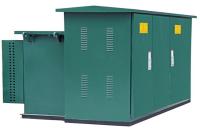
With the continuous growth of global electricity demand, transformers, as the core equipment in power systems, play a crucial role. In order to improve transformer efficiency and reduce energy consumption, researchers and engineers are constantly exploring new technologies and design solutions. Among them, the new core structure design has become a key focus of research as an important means to enhance transformer efficiency. By improving core materials and optimizing core structures, energy losses can be effectively reduced, while the stability and reliability of transformers are improved.
Firstly, traditional transformer cores mainly use silicon steel sheets as the core material. Although silicon steel has good magnetic conductivity, it generates eddy current losses and hysteresis losses in practical applications, which are the main factors affecting transformer efficiency. To address this issue, new core structure designs propose the use of high-performance alloy materials, such as amorphous alloys or grain refinement techniques, to reduce eddy current losses and hysteresis losses. These materials have stronger magnetic properties and can significantly reduce energy losses, thereby improving the overall efficiency of the transformer.

Secondly, the geometry of the core is another important factor that affects transformer efficiency. Traditional core designs often use simple geometric shapes such as straight-line forms, which limit the efficiency of magnetic flux flow. New core structure designs adopt more complex and optimized shapes, such as ring-shaped cores or segmented cores, which allow the magnetic flux to flow more evenly within the core, reducing magnetic flux leakage and eddy current generation. Additionally, the optimized core structure can also reduce the core's volume, further lowering the size, weight, and cost of the transformer.
Thirdly, the cooling performance of the core also plays a critical role in transformer efficiency. In traditional designs, core temperature rise is a key factor affecting transformer performance and lifespan. New core structure designs optimize the layout of internal cooling channels and use high-efficiency heat dissipation materials to effectively lower the core temperature and improve the transformer's cooling performance. This not only ensures that the transformer operates at a lower temperature during extended operation, but also prolongs its service life.
Moreover, new core structure designs also consider the optimization of manufacturing processes. In traditional core manufacturing, the process is complex and costly. New design solutions introduce advanced manufacturing technologies, such as laser cutting and 3D printing, which significantly improve the precision and consistency of the cores, reduce waste and errors in production, and thereby lower production costs while enhancing manufacturing efficiency.
How About Stainless Steel Linear Drainage Ditch Customization?
2022-09-01Classification and selection of color stainless steel screens
2021-06-24The difference between 304 stainless steel pipes produced by different furnaces
2022-08-23Where is the application field of 316L stainless steel pipe drawing technology?
2021-03-10Building curtain wall-316L low carbon stainless steel
2021-08-09Application of multi-air gap segmented core in anti-dc bias transformer
2025-03-11






